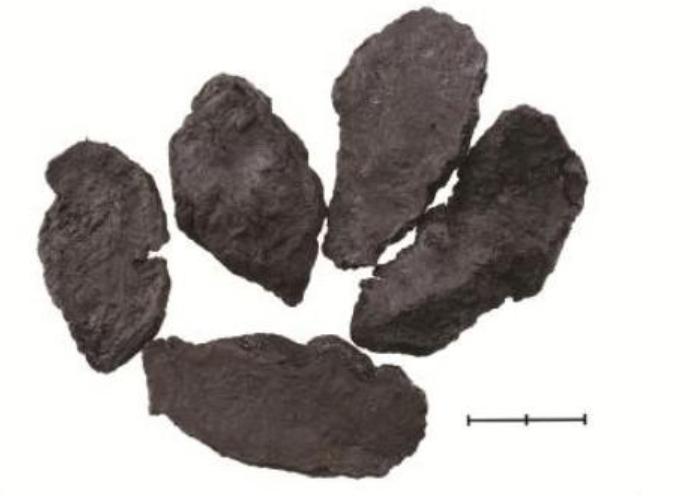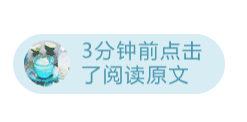 Read Traditional Chinese MedicineEvery day11:30Delivering the freshest
Read Traditional Chinese MedicineEvery day11:30Delivering the freshest
Authoritative and high-quality knowledge of TCM
If you like it, please star it for me
Editor’s Guide
Rehmannia is the fresh or dried tuber of the plant Rehmannia glutinosa, belonging to the family Scrophulariaceae. Clinically, we generally see raw rehmannia (Sheng Di Huang) and cooked rehmannia (Shu Di Huang), which have different properties, functions, and indications, so it is essential to distinguish between them when used. Today, we will introduce cooked rehmannia and its excellent therapeutic effects on various conditions. Teacher Xu Shu summarized six points—
Cooked rehmannia has a sweet and slightly bitter taste, thick flavor, and light aroma. It is rich in yin and has yang properties, greatly nourishing essence and blood, nourishing kidney water, filling bone marrow, benefiting true yin, replenishing the original qi of the kidneys, and nourishing the original essence of the five organs. It is a crucial herb for nourishing blood and benefiting essence. The great physician Zhang Jingyue of the Ming Dynasty was the first to skillfully use cooked rehmannia. He stated that “essence is the foundation of form; form is born from essence; without essence, there is no form.” Thus, Zhang said: “Therefore, essence and blood are form, and form is essence and blood.” He believed that “cooked rehmannia has a sweet and slightly bitter taste, thick flavor, and light aroma, and it is heavy… It greatly nourishes blood deficiency, nourishes kidney water, fills bone marrow, benefits true yin, specifically replenishes the original qi of the kidneys, and also treats the blood-storing meridians…” For treating chronic enteritis, cooked rehmannia is the monarch herb, combined with Huang Lian (Coptis) and Huang Qin (Scutellaria); for treating wind-cold colds, cooked rehmannia is paired with Jing Jie (Schizonepeta) and Fang Feng (Saposhnikovia); for treating kidney yang deficiency, cooked rehmannia is combined with Gui Zhi (Cinnamon twig) and Fu Zi (Aconite). Only those with deep clinical foundations can appreciate the subtleties of these combinations, as this experience comes from the “Complete Works of Zhang Yue.” In the Qing Dynasty, physicians Fu Qingzhu and Chen Shiduo were also adept at using cooked rehmannia. Mr. Chen Shiduo’s “New Compilation of Materia Medica” states: “Cooked rehmannia can generate blood and benefit essence, and promote the marrow in the bones. True yin energy cannot be generated without it, and the flames of deficiency heat cannot be reduced without it.” The famous formula “Yin Chen Si Fu Decoction” is a representative formula, with cooked rehmannia as the monarch herb.
The “Clinical Handbook of Chinese Medicine” states: “Cooked rehmannia is inherently rich and greasy. If there is blood deficiency and insufficient liver and kidney, accompanied by poor spleen and stomach function, when using cooked rehmannia, it can be combined with qi-regulating herbs such as Chen Pi (Tangerine peel) and Sha Ren (Amomum) to reduce its greasy nature that obstructs the stomach. This is the theoretical basis for later physicians to combine cooked rehmannia with Sha Ren.” In my early clinical practice, I was concerned about the greasy nature of cooked rehmannia, and I dared not exceed a dosage of 10-20g, adding 10g of Sha Ren, but the efficacy was poor. Now it seems that combining Sha Ren with cooked rehmannia is purely speculative. The greasy nature of cooked rehmannia cannot be resolved by mixing it with Sha Ren to address the digestive issues of the spleen and stomach. Because cooked rehmannia requires prolonged decoction, while Sha Ren should be added later, if cooked rehmannia is mixed with Sha Ren and decocted together, the properties of Sha Ren would have already evaporated, thus failing to reduce the greasy nature of cooked rehmannia and unable to influence the digestive function of the spleen and stomach.
Additionally, regarding the issue of greasy tongue coating, many physicians have approached it from the perspective of the three burners to eliminate dampness. Some have effective results, while others are basically ineffective. When I was new to clinical practice, I encountered a patient with recurrent oral ulcers and a greasy tongue coating. I prescribed Gan Lu Decoction, using a heavy dose of Sheng Di Huang (30g) and Shu Di Huang (60g), adding Ren Shen (Ginseng). After 7 doses, the ulcers disappeared, and after 14 doses, the tongue coating was clean. I later encountered several patients with greasy tongue coatings, some with sore throats and some with coughs, and all responded well to heavy doses of cooked rehmannia. My rationale for the extensive use of cooked rehmannia comes from the three-burner differentiation theory of Qing Dynasty physician Wu Jutong: “Treating the upper burner is like a feather (it must not be lifted lightly), treating the middle burner is like a scale (it must be stable), and treating the lower burner is like a weight (it must not be heavy).” Cooked rehmannia is heavy and directly enters the lower burner, fills essence, transforms essence into qi, and qi transforms into fluids, thus able to eliminate thick greasy tongue coating.
01
Extensive Use of Cooked Rehmannia for Treating Jaundice
Case Sharing
Yang, female, 75 years old. Initial diagnosis on December 6, 2018.
Main Complaint: Skin and sclera yellowing accompanied by anorexia, nausea, and abdominal distension for over a month.
Medical History: Diagnosed with gallbladder cancer at Jiaxing People’s Hospital in Zhejiang, underwent surgical drainage followed by poor efficacy with TCM treatment. Referred by a friend for treatment.
Current Diagnosis: Yellowish complexion, dark yellow skin and sclera, lethargy, poor appetite, dull pain under the right rib, normal bowel movements. Tongue coating is white and greasy, pulse is deep and weak.
Pattern Differentiation: Kidney essence deficiency, yang deficiency with cold stagnation.
Prescription: Yin Chen Shu Fu Decoction with added cooked rehmannia.
Cooked rehmannia 30g, Yin Chen (Artemisia) 10g, Bai Zhu (Atractylodes) 20g, Fu Zi (Aconite) 10g, Gan Jiang (Dried ginger) 3g, Zhi Gan Cao (Honey-fried licorice) 6g, Rou Gui (Cinnamon) 3g.
After reviewing the previous physician’s prescription of Yin Chen Hao Decoction and Zhi Zi Bai Pi Decoction with modifications, I diagnosed it as yin jaundice and treated it with Yin Chen Shu Fu Decoction plus 30g of cooked rehmannia. One week later, the patient showed significant improvement in spirit, good appetite, gradual reduction of jaundice, and noticeable improvement in tongue and pulse. After consolidating with the original method for 3 months, jaundice completely disappeared, followed by Xiang Sha Li Zhong Decoction for recovery.
Clinical Insights
Jaundice can be classified into yang jaundice and yin jaundice. Yang jaundice prioritizes detoxification, and its efficacy surpasses that of Yin Chen Hao Decoction. Yin jaundice, as described in the literature, is treated with Yin Chen Shu Fu Decoction, but often with poor efficacy. The reason lies in the cold stagnation of yin, causing bile to not follow its normal path, leading to jaundice, rooted in the kidneys and manifested in the liver. The treatment focus is on replenishing kidney essence, as essence can transform into qi, and qi can regulate the normal flow of fluids. Therefore, cooked rehmannia is paired with Fu Zi, seeking yang within yin, generating a little fire to produce qi.

02
Extensive Use of Cooked Rehmannia for Treating Polycystic Ovary Syndrome
Case Sharing
Liang, female, 28 years old. Initial diagnosis on August 30, 2016.
Main Complaint: Amenorrhea for over a year.
Medical History: The patient has had amenorrhea for over a year and has been diagnosed with polycystic ovary syndrome at multiple hospitals. The hospital prescribed Diane-35 for six months, but menstruation has not resumed, so she came for TCM treatment.
Current Diagnosis: Amenorrhea, obesity, pale complexion, dry mouth, cold lower limbs, tongue is swollen with a white greasy coating, pulse is deep, slow, and weak.
Pattern Differentiation: Kidney essence deficiency, yang deficiency with cold stagnation.
Prescription: Si Wu Decoction combined with Shen Si Wei Decoction with modifications.
Cooked rehmannia 60g, Dang Gui (Angelica) 30g, Bai Shao (White peony) 10g, Chuan Xiong (Ligusticum) 10g, Tu Si Zi (Cuscuta) 30g, Gou Qi Zi (Goji berry) 10g, Ba Ji Tian (Morinda) 15g, Xian Ling Pi (Epimedium) 30g, Xian Mao (Curculigo) 10g, Zi He Che (Placenta) 10g, Lu Jiao Pian (Deer antler) 10g, Bai Zhu (Atractylodes) 60g. 14 doses.
With this modified formula, treatment lasted for 9 months, and menstruation returned to normal, with no recurrence during follow-up.
Clinical Insights
Polycystic ovary syndrome is primarily characterized by amenorrhea, obesity, or acne. Ultrasound may reveal multiple immature follicles. I pondered: why can’t the follicles develop normally? It is due to congenital kidney yang deficiency, causing the uterine cavity to be cold. Therefore, the treatment should focus on greatly nourishing essence and blood, warming the uterus, and regulating the Chong and Ren meridians. The key is the extensive use of cooked rehmannia (30-60-90g), while also supplementing the congenital aspect with Zi He Che and Lu Jiao.

Cooked Rehmannia
Source: “Illustrated Guide to Chinese Medicinal Herbs”
03
Extensive Use of Cooked Rehmannia for Treating True Cold-False Heat Syndrome
The true cold-false heat syndrome is primarily characterized by sore throat, fever, dry mouth, and cold lower limbs, with a pale swollen tongue and tooth marks, and a weak pulse, treated with modified Yin Fire Decoction.
Prescription: Cooked Rehmannia90g, Shan Zhu Yu (Cornus) 15g, Mai Dong (Ophiopogon) 10g, Fu Ling (Poria) 30g, Wu Wei Zi (Schisandra) 10g, Mu Dan Pi (Peony root) 10g, Ze Xie (Alisma) 10g, Rou Gui (Cinnamon) 3g, Fu Zi (Aconite) 10g, Ren Zhong Bai (Ginseng) 10g, Gui Jiao (Tortoise shell) 10g.
04
Extensive Use of Cooked Rehmannia for Treating Deficiency Asthma Syndrome
Asthma syndrome is mostly a mix of deficiency and excess, exacerbated by external pathogens. For any asthma syndrome with a rough pulse, useCooked Rehmannia90g, Dang Gui 21g, Xing Ren (Apricot kernel) 10g, Tao Ren (Peach kernel) 10g, Di Long (Earthworm) 15g, Gan Cao 6g for excellent results. The extensive use of cooked rehmannia can transform phlegm, stop wheezing, and replenish essence, serving three purposes with one herb.

05
Cooked Rehmannia for Stimulating Appetite
Chen Shiduo stated that cooked rehmannia is a sacred herb for stimulating appetite. It can stimulate appetite because “the stomach is the gate of the kidneys”; when kidney water is abundant, the stomach’s fluids are naturally moistened. Therefore, when kidney qi is sufficient, stomach qi is also sufficient, and when kidney qi rises, stomach qi also rises. Thus, I often useYin Fire Decoction to treat anorexia.
06
Cooked Rehmannia for Stopping Diarrhea
Stopping diarrhea with cooked rehmannia is not well known among physicians, as its greasy nature is often overlooked. However, when there is essence deficiency causing diarrhea, it has been remarkably effective. The “Discourse on Materia Medica” states: “Cooked rehmannia is sweet and warm, greatly nourishing the kidney essence. For any lower burner deficiency causing diarrhea, where other herbs are ineffective, taking cooked rehmannia alone can stop diarrhea, but it must be used in doses of 60-90g. If used in smaller amounts, it can cause discomfort and be ineffective. The ability of cooked rehmannia to treat kidney-related diarrhea is similar to the ability of Bai Zhu to treat spleen-related diarrhea; although the mechanisms differ, the effects are similar. Due to the aversion of modern physicians to its use, I have highlighted this point.
Collection of Famous Physicians’ Prescriptions
If you have learned about the clinical uses of cooked rehmannia and want to know more, this book compiled by Teacher Xu Shu contains many explanations of Chinese herbs, making it very suitable for clinical study.


“Xu Shu’s Use of Medicine Like Military Strategy 2”
Click the cover to enter the Yuyijia TCM Academy to purchase this book
Scan the code for a free trial read
Professor Xu Shu has diligently studied the classics and has a broad knowledge of various schools. He builds upon the theories of Shang Han and Jin Gui, proposing an academic thought centered on pulse diagnosis, with classical formulas as the main focus and modern formulas as the supplementary, specializing in diseases and medicines. This book is a specialized series on his medicinal use, containing clinical application experiences of over 50 Chinese herbs, with high academic value, worthy of reference and use.

Previous HighlightsRECOMMEND
Treating lung cancer primarily from two aspects
Foot baths to regulate menstrual disorders
The ten warning signs of Alzheimer’s disease, do not take them lightly!
 Copyright Statement
Copyright Statement
Some content of this article is selected from “Xu Shu’s Use of Medicine Like Military Strategy 2” (published by China Traditional Chinese Medicine Press, authored by Xu Shu), and the final interpretation rights belong to the original author. This article is recommended for publication byRead Traditional Chinese Medicine (WeChat ID: ydzhongyi). The cover and images in the text are sourced from Shetu Network, and the copyright belongs to the original author. If there is any infringement, please contact for deletion. Unauthorized reproduction is prohibited!



 Click“Read the original text”to purchase the recommended bookGood articles must be “looked at”
Click“Read the original text”to purchase the recommended bookGood articles must be “looked at”

